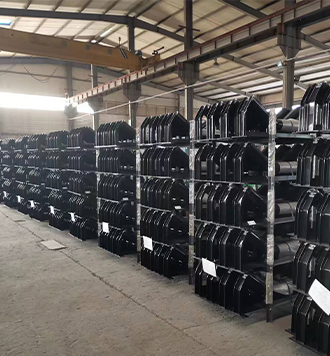 Afrikaans
Afrikaans  Albanian
Albanian  Amharic
Amharic  Arabic
Arabic  Armenian
Armenian  Azerbaijani
Azerbaijani  Basque
Basque  Belarusian
Belarusian  Bengali
Bengali  Bosnian
Bosnian  Bulgarian
Bulgarian  Catalan
Catalan  Cebuano
Cebuano  Corsican
Corsican  Croatian
Croatian  Czech
Czech  Danish
Danish  Dutch
Dutch  English
English  Esperanto
Esperanto  Estonian
Estonian  Finnish
Finnish  French
French  Frisian
Frisian  Galician
Galician  Georgian
Georgian  German
German  Greek
Greek  Gujarati
Gujarati  Haitian Creole
Haitian Creole  hausa
hausa  hawaiian
hawaiian  Hebrew
Hebrew  Hindi
Hindi  Miao
Miao  Hungarian
Hungarian  Icelandic
Icelandic  igbo
igbo  Indonesian
Indonesian  irish
irish  Italian
Italian  Japanese
Japanese  Javanese
Javanese  Kannada
Kannada  kazakh
kazakh  Khmer
Khmer  Rwandese
Rwandese  Korean
Korean  Kurdish
Kurdish  Kyrgyz
Kyrgyz  Lao
Lao  Latin
Latin  Latvian
Latvian  Lithuanian
Lithuanian  Luxembourgish
Luxembourgish  Macedonian
Macedonian  Malgashi
Malgashi  Malay
Malay  Malayalam
Malayalam  Maltese
Maltese  Maori
Maori  Marathi
Marathi  Mongolian
Mongolian  Myanmar
Myanmar  Nepali
Nepali  Norwegian
Norwegian  Norwegian
Norwegian  Occitan
Occitan  Pashto
Pashto  Persian
Persian  Polish
Polish  Portuguese
Portuguese  Punjabi
Punjabi  Romanian
Romanian  Russian
Russian  Samoan
Samoan  Scottish Gaelic
Scottish Gaelic  Serbian
Serbian  Sesotho
Sesotho  Shona
Shona  Sindhi
Sindhi  Sinhala
Sinhala  Slovak
Slovak  Slovenian
Slovenian  Somali
Somali  Spanish
Spanish  Sundanese
Sundanese  Swahili
Swahili  Swedish
Swedish  Tagalog
Tagalog  Tajik
Tajik  Tamil
Tamil  Tatar
Tatar  Telugu
Telugu  Thai
Thai  Turkish
Turkish  Turkmen
Turkmen  Ukrainian
Ukrainian  Urdu
Urdu  Uighur
Uighur  Uzbek
Uzbek  Vietnamese
Vietnamese  Welsh
Welsh  Bantu
Bantu  Yiddish
Yiddish  Yoruba
Yoruba  Zulu
Zulu Drive Belt Idler - Essential Components for Smooth Performance
Understanding the Drive Belt Idler Function and Importance
In the realm of automotive engineering, the drive belt idler plays a critical role in ensuring the smooth operation of various engine components. The drive belt, also known as the serpentine belt in many modern vehicles, is pivotal for transmitting power from the engine to various accessories. It is essential to understand the function and importance of the drive belt idler in maintaining a vehicle’s performance and longevity.
What is a Drive Belt Idler?
A drive belt idler is a pulley that helps guide and tension the drive belt. It is typically mounted on a fixed position in the engine compartment, providing a path for the belt to travel over as it connects the engine crankshaft to components such as the alternator, power steering pump, air conditioning compressor, and water pump. The idler pulley is crucial for ensuring that the belt remains tight and properly aligned, preventing slippage and wear.
The Function of the Drive Belt Idler
The primary function of the drive belt idler is to maintain tension in the drive belt. A loose belt can lead to inadequate performance of the engine accessories, resulting in poor electrical output, compromised steering assist, and ineffective cooling systems. The idler pulley serves as a pivot point that ensures the belt remains taut, reducing the likelihood of belt slippage.
Additionally, the idler pulley helps in aligning the belt accurately. Proper belt alignment is essential to prevent uneven wear, which could lead to premature failure of the drive belt. By ensuring that the belt runs in a straight line without deviation, the idler pulley not only prolongs the life of the drive belt but also supports the efficient functioning of other engine components.
drive belt idler

Signs of a Failing Drive Belt Idler
Over time, the drive belt idler can wear out due to constant friction and pressure exerted upon it. This wear can lead to several issues that affect vehicle performance. Common signs of a failing idler pulley include
1. Squealing Noise A high-pitched squealing noise when the engine is running may indicate that the belt is slipping on a worn idler pulley. 2. Belt Wear Visible signs of fraying or cracking on the drive belt can suggest that the idler is not maintaining proper tension.
3. Vibration Excessive vibration in the belt system might indicate a failing idler, which can compromise the performance of connected components.
4. Increased Engine Load If accessories powered by the drive belt are underperforming or drawing more power than usual, this can be a sign that the idler pulley is not functioning correctly.
Conclusion
In summary, the drive belt idler is an essential component that plays a vital role in the proper functioning of a vehicle’s engine accessories. Understanding its function, recognizing the signs of failure, and maintaining it adequately can contribute significantly to the overall health and performance of a car. Regular inspections and timely replacements of malfunctioning pulleys can ensure that the drive belt system continues to operate smoothly, enhancing both the efficiency and longevity of the vehicle. Taking care of this seemingly small component can lead to significant benefits in automotive reliability.
-
Revolutionizing Conveyor Reliability with Advanced Rubber Lagging PulleysNewsJul.22,2025
-
Powering Precision and Durability with Expert Manufacturers of Conveyor ComponentsNewsJul.22,2025
-
Optimizing Conveyor Systems with Advanced Conveyor AccessoriesNewsJul.22,2025
-
Maximize Conveyor Efficiency with Quality Conveyor Idler PulleysNewsJul.22,2025
-
Future-Proof Your Conveyor System with High-Performance Polyurethane RollerNewsJul.22,2025
-
Driving Efficiency Forward with Quality Idlers and RollersNewsJul.22,2025





























